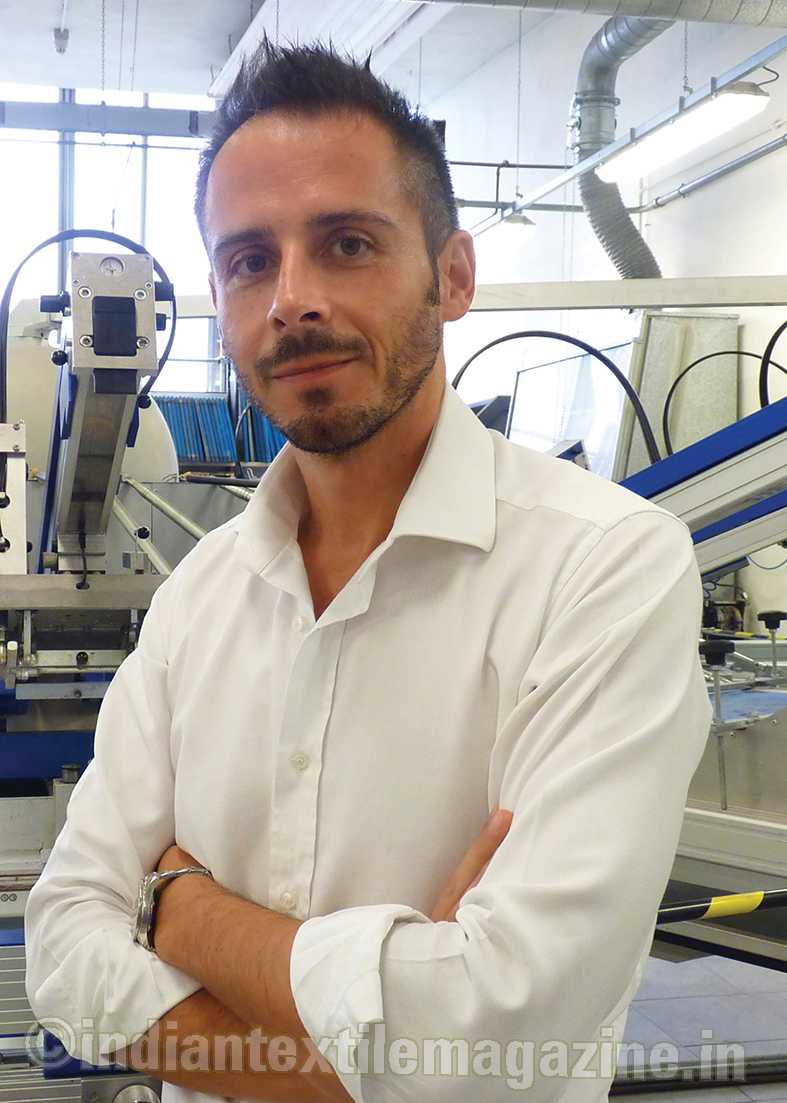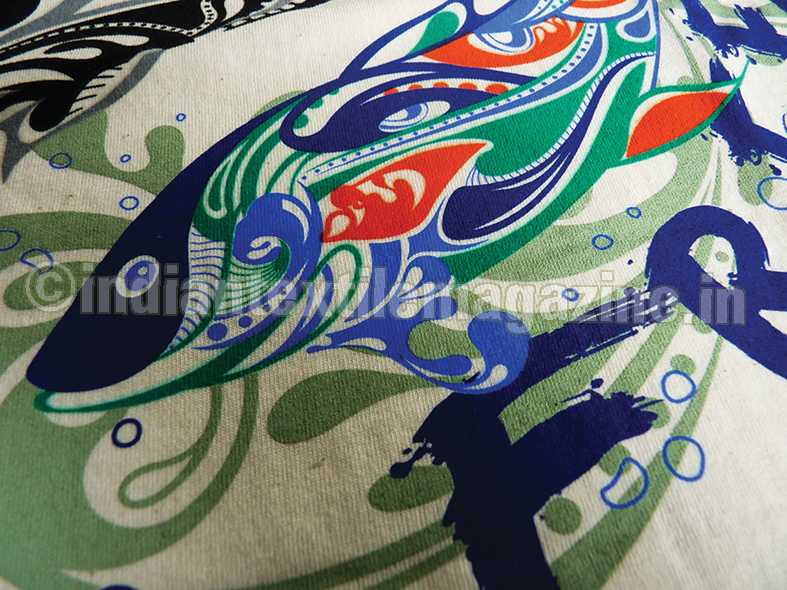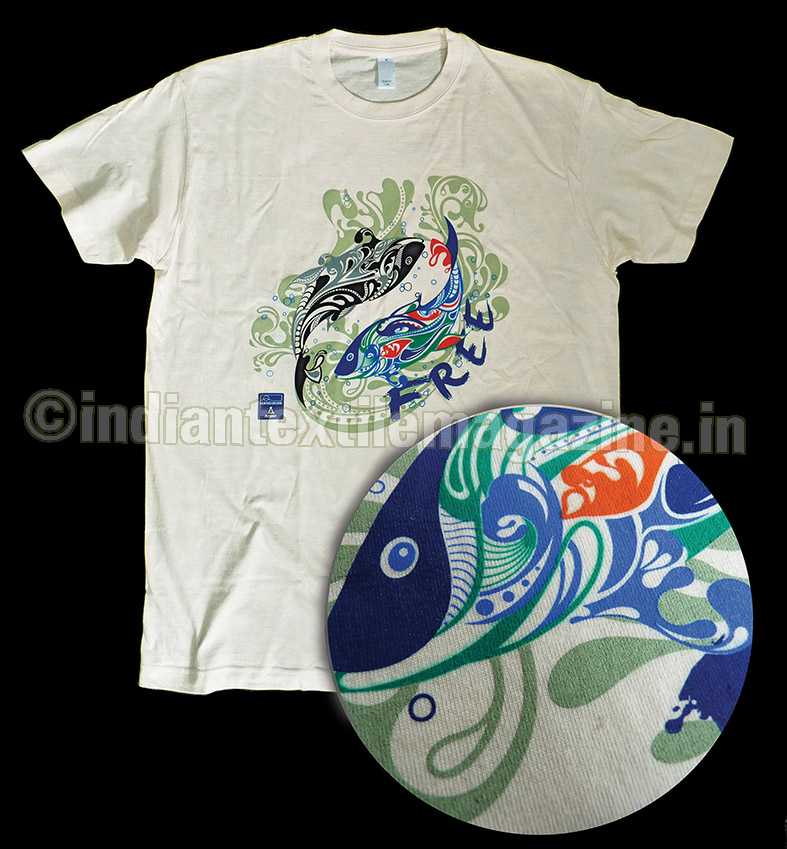Kiian Specialty Inks’ major breakthrough
Achieving a balance between technical performance and health, safety and environmental concerns is a continuing challenge for ink makers. Dr. Daniele Uboldi, Research & Development Manager, and Flavio Ronchini, Technical Marketing Manager, examine the different factors involved and explain Kiian Specialty Inks’ solution.
Traditional plastisol inks (containing PVC) have been the inks of choice for screen printing on pre-cut textile applications for decades. The major advantages of plastisol inks are their ease of use for textile printers and high productivity rates, combined with good colour opacity and attractive pricing.
Previous environmental concerns about the presence of heavy metals and phthalates in these inks have been overcome through substitution with other pigments and non-toxic plasticisers. What remains is the growing concern about polyvinyl chloride (PVC), the base resin of all conventional plastisol inks, especially when in direct contact with infants. Pressure from textile brand-owners, retailers and NGOs to remove PVC from textile products has, therefore, been increasing.

In most cases, water-based inks have been the preferred option when choosing environment-friendly inks. The major technical benefit of water-based inks is the property of penetrating the fabric, creating a soft touch to the finished product. The advent of high-solid acrylic water- and polyurethane-based systems has led to improvements in printing efficiency. However, both these ink types also have their limitations. Water-based inks tend to dry rapidly on the screens. Frequent manual intervention is necessary, and consequently the productivity rates of these systems are significantly lower. Another limitation is that their performance is strongly influenced by the printing environment, in particular temperature and humidity levels.
With the rapid increase in the use of synthetic fabrics, particularly for sportswear, but also in fashion clothing, silicon-based inks have found a market, thanks to their excellent elasticity and durability. From an industrial point of view, however, silicon-based inks are not an ideal choice as they are bi-component systems that need to be used within a limited time span (pot life) after mixing and require intermediate curing between colour applications. Productivity rates are therefore low and, combined with their high cost, their overall cost-effectiveness is poor.
Plastisols without PVC?
Although the common belief is that plastisol inks are by definition based on polyvinyl chloride resin, this is conceptually not quite correct. Plastisols are, in fact, defined as a dispersion of a polymer resin in a plasticiser emulsion, forming a liquid or paste that gels and fuses when heated. The key parameters of textile plastisol links are: 100 per cent solid systems without either solvents or water, and they form a solid coating after curing for two-third minutes at temperatures in the 150-170°C range.
This has made the invention of PVC-free plastisol inks that combine the performance benefits of conventional plastisols with an ecologically-friendly composition the ‘Holy Grail’ for textile ink manufacturers. Resin manufacturers and ink formulators have been working on this challenge for a number of years, and significant progress has been made, typically based on acrylic resin systems.
However, the industrial products that have been introduced in the market have demonstrated significant shortcomings that have resulted in a low market penetration so far. These defects include a lack of stability and reduced shelf life, and the inability to formulate white inks that dry promptly after exposure to rapid IR flash curing.
Achieving the breakthrough

Following a multi-year development programme at Kiian Specialty Inks, it has now finally been possible to formulate and commercially manufacture a PVC-free plastisol ink that has overcome the limits of earlier iterations. Free inks feature a combination of high quality ingredients, a perfectly balanced formulation and discrete manufacturing process, enabling Kiian Specialty Inks to introduce a complete range of inks which, in terms of quality and process performance, are a true match to the best conventional plastisols on the market.
White inks in this range are engineered for IR flash drying, making it possible to print on dark fabrics. All inks show exceptionally good viscosity stability on the screen, typically better than most conventional plastisols. This stability allows the use of fine mesh sizes, resulting in a reduction in initial production run losses by getting the first print right. The standard colours are outstanding in their wet-on-wet printing characteristics with up to eight printed layers being feasible without intermediate drying.
The shelf life of these inks is similar to traditional plastisols, and as the inks are mono-component, they are easy to handle and without pot life limitations. Being plastisols, they remain perfectly plastic after hours or days of storage on screen and printers can therefore resume printing without loss of time or materials due to screen cleaning. The inks are wholly compatible with commonly used screen emulsions as well as with screen cleaning agents. With screen printing and furnace curing parameters remaining basically the same, the switch from traditional plastisols to the free inks is really hassle free.
The durability of this new generation of plastisols conforms to the most stringent requirements of the industry today, withstanding more than five washing cycles at 60°C with intermediate drying. With the right combination of printed layers of ink, it is possible to achieve very good elasticity to avoid cracking and damage on even highly stretchable fabrics. In extreme cases like professional clothing, the use of specific additives can help to overcome any durability concerns.
These ground-breaking inks are universal in the sense that they can be employed on virtually all types of fabric used today in textile printing, from organic fibres to mixed fabrics and fully synthetic fabrics such as polyester and LYCRA. Thanks to the use of a specifically formulated anti-bleeding ink, the risk of colorant sublimation through the ink layer is prohibited. Moreover, their performance is unaffected by different climatic environments, whether hot or cold, dry or humid.
The final surface appearance of these PVC-free inks are similar to conventional plastisol inks. There are however some advantages due to the inherent characteristics of the resin system used. The feel tends to be softer, the tackiness is lower and the colours are less glossy than conventional plastisol inks.
Benefits beyond print
The ecological and health impact of all chemicals used in the textile industry are a major concern to stakeholders in the industry, and printing inks are no exception. PVC-free plastisol inks fully respond to the demand for green products. The chemical compounds deployed in the formulations present no health or environmental concerns, and as the system is based on 100 per cent solids there are no volatile organic compounds (VOCs) generated. The high performance and extended screen-life possible mean that the amount of ink waste for disposal is minimised. The quantity of water and chemicals required for cleaning the screens is also reduced.
Free inks conform to the major international textile norms like the OEKOTEX Standard 100. Their use on organic fibres is certified by GOTS. The inks also pass the stringent specifications from leading industry brand owners like Nike (RSL) and the Inditex Group (Clear to Wear).
In conclusion, the overall ecological footprint in terms of health concerns related to the composition, waste reduction and reduced energy consumption, is extremely positive. These new PVC-free plastisol inks demonstrate that combining quality and ecology is possible with multiple benefits for textile printers, brand owners, retailers and consumers.

